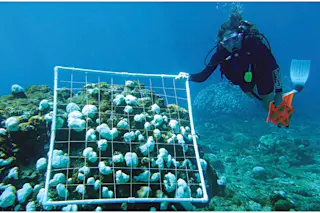As heated global warming debates continue, scientists are also investigating ways to get our planet to cool off if the politicians can't figure out how to reduce greenhouse gas emissions. The latest geoengineering scheme involves turning the world’s oceans into a giant bubble bath, with hundreds of millions of tiny bubbles pumped into the seas. This would increase the water's reflectivity and bring down ocean temperatures, according to Harvard University physicist Russell Seitz. As the creative physicist said to the assembled crowd at an international meeting on geoengineering research: “Since water covers most of the earth, don’t dim the sun.... Brighten the water.” Seitz explained that micro-bubbles already occur naturally, with bubbles under the ocean's surface reflecting sunlight back into space and mildly brightening the planet. What Seitz imagines doing now is artificially pumping many more bubbles into the sea. These additional micro-bubbles would each be one five-hundredth of a ...
Could Turning the Oceans Into a Giant Bubble Bath Cool the Planet?
Explore the global warming debates and innovative geoengineering research, including micro-bubbles to cool our planet.
More on Discover
Stay Curious
SubscribeTo The Magazine
Save up to 40% off the cover price when you subscribe to Discover magazine.
Subscribe













